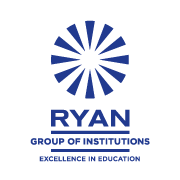Introduction to Assessments in the Digital Age
In our rapidly evolving, interconnected world, the methods by which we educate our children are undergoing profound transformation. The integration of digital tools within the K-12 educational framework is not only a symbol of technological advancement but also reflects the fundamental shift in how our children perceive and interact with their surroundings.
Understanding Formative and Summative Assessments
Education’s transformation in the digital era can be well understood through the prism of formative and summative assessments. Formative assessments, akin to regular health checks for learning, include ongoing evaluations like quizzes and discussions, allowing teachers to gauge student progress. Summative assessments, on the other hand, are conclusive tests at the end of a study period, summarizing what the students have comprehended and significantly contributing to their final grades.
Transition from Paper to Screen
The journey from traditional paper-based methods to digital technology is not just about embracing the latest tools; it is a paradigm shift that caters to how our children engage with the world today. The immediacy of feedback, allowing students instant insights into their performance, coupled with the convenience of taking assessments from home or school, marks a milestone in educational flexibility.
Historical Overview
The transition to digital assessments has been gradual, mirroring the broader societal shift towards technological reliance. However, recent advances, especially in India, have accelerated this transformation, making it an intrinsic part of modern education.
John Dewey’s words deeply resonate with this evolution: “If we teach today’s students as we taught yesterday’s, we rob them of tomorrow.” It’s a poignant reminder that accepting and integrating novel methods can not only enrich education but also future-proof it.
The Practical Impact of Digital Assessments
Digital assessment strategies transcend the realm of fleeting trends; they are a cogent reflection of our dynamic world. A foundational understanding of these changes helps parents comprehend how they can be harnessed to augment their children’s educational experience.
Digital Formative Assessments: Bringing Learning to Life
When delving into the concept of formative assessments, digital tools offer a revolutionary perspective. Immediate insights, akin to having a personal guide beside the students, allow them to instantly recognize their mistakes and successes. This innovation extends beyond mere technology; it fosters the personalization of the learning journey by enabling teachers to create lessons tailored to each child’s unique needs and performance.
Navigating the Ethical and Practical Dimensions
Digital Summative Assessments: Fairness and Efficiency
The digital age has also profoundly impacted summative assessments, bringing forth considerations of fairness and efficiency. Consistent grading facilitated by machines, devoid of fatigue or bias, ensures a uniform evaluation process. The consequent time savings for teachers, liberating them from the arduous task of grading, frees them to concentrate on their primary passion—teaching. This shift is not merely about convenience; it’s a revolutionary step towards refining the evaluation process of learning.
The Ethical Side: Fairness and Safety
The new frontier of digital tools inevitably raises complex questions, interweaving technological advancement with ethical considerations. Is the access to these digital tools equitable for all students? How do we safeguard the privacy of children’s information? These concerns transcend technical issues; they embody our collective responsibility towards doing what’s right in the education sector.
Challenges and Support for Educators
Not all educators might find solace in technological advancements. However, with appropriate training and continual support, this perceived gap can be bridged by turning technology from a potential hurdle into an enabling assistant.
Indian Schools Leading the Way
In India, the adoption of digital assessments is not merely a theoretical concept but a lived reality. Schools across the nation are exemplifying this digital embracement, setting a precedent for others to follow.
Looking to the Future: Building Together
The path towards digital assessments is neither isolated nor linear. It mandates a concerted effort from schools, parents, and students alike. Understanding the benefits and jointly addressing the challenges is essential to leveraging the full potential of this shift.
The Future Landscape of Education

Towards a More Personalized Education
The migration to digital assessments signifies more than a technological leap; it heralds a broader movement towards personalized, responsive education. Adaptable learning paths, parental involvement facilitated through digital platforms, and the embrace of efficiency all contribute to a more receptive educational environment.
Technology and the Teacher’s Role
Far from supplanting the role of teachers, technology functions as an aid, freeing them for more significant engagement with students. The human connection in education is not diminished but rather amplified and is fostering a nurturing learning environment.
Ethical Considerations Revisited
The themes of fairness and privacy are not mere footnotes; they are integral to the responsible implementation of technology in education. Continuous dialogues and updates are essential to ensure equitable access and secure protection of student information.
Preparing for the Future Together
The digital era of assessments is upon us, brimming with opportunities and attendant challenges. Collaboration between schools and parents, coupled with a commitment to continuous learning and adaptability, marks the path forward.
Let’s further explore the human aspect of digital assessments and the lessons that can be gleaned from India’s educational landscape
The Human Aspect of Digital Assessments
Teachers: Guiding Lights in a Digital World
The advent of digital assessments does not diminish teachers to mere operators of technology. Instead, it heightens their role, enhancing their ability to craft personalized learning paths. Far from erasing the human touch, technology augments the connection between teachers and students, symbolizing a shift towards enrichment rather than replacement. This human-cantered approach keeps empathy and understanding at the core of education.
Parents: Active Participants in the Learning Journey
Digital tools reframe the role of parents, turning them from mere spectators to insightful collaborators. With real-time insights, parents and teachers can bridge the divide, working in unison towards the well-rounded growth of the child. This harmonious alignment ensures that technology functions as a connector rather than a barrier, creating a humane partnership in the educational journey.
Students: Empowered Navigators of Their Learning Paths
At the heart of this transformation lie the students. Digital tools, rather than overpowering them, empower them to self-assess and navigate their learning paths. This alignment with their natural curiosity makes learning an engaging, rather than alienating, experience. The digital revolution in education is not just about technological advancement; it’s about humanizing the learning process, recognizing and nurturing individuality.
Challenges: Roadblocks or Opportunities?
The journey towards digital assessment in education is punctuated with challenges that need to be carefully navigated. Ensuring equal access across socio-economic strata and adapting to a new mindset that values human connection alongside technological innovation are not insurmountable obstacles. These are milestones, opportunities to exercise collective wisdom and empathy, shaping the path forward.
The integration of digital assessments in the K-12 education framework symbolizes a compassionate and forward-thinking approach to learning. Even in this rapidly evolving digital age, human values, collaboration, and empathy must be the guiding lights, ensuring that the essence of education remains intact.
Embracing the Future with Wisdom and Humanity
The shift towards digital assessments is more than a mere technological trend; it’s a transition towards a more humane, individualized, and ethical form of education. This transformation enhances not only efficiency but also the meaningfulness and connection to each child’s unique needs and potential. By working together, understanding the full potential of these tools, and ensuring their responsible usage, we can craft a future that respects our children’s best interests.
John Dewey’s insight rings true as we navigate this terrain: “If we teach today’s students as we taught yesterday’s, we rob them of tomorrow.” The adoption of digital assessments, while keeping a close eye on ethics and humanity, offers a new dimension of learning, ready to explore and enrich the educational landscape.
By understanding this shift, we are not merely riding a wave but actively shaping our children’s learning journey. It’s about embracing technology with wisdom and empathy, ensuring that it serves the interests of the future generation, aligning with their growth, and nurturing their potential.




